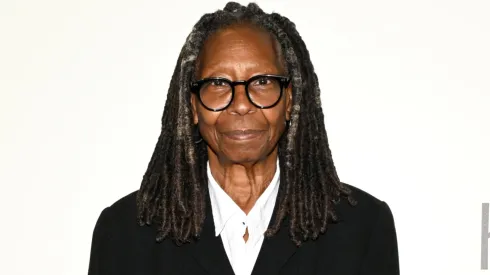Whoopi Goldberg does not merely act; she performs an act of profound, theatrical alchemy, transforming the very architecture of a scene through the sheer force of her presence. Her four decades in cinema serve not as a simple chronology of work, but as a compelling case study in the dynamics of cinematic versatility.
She emerged from the avant-garde space of her one-woman show to become the definitive EGOT winner of her era, yet the true measure of her achievement lies in the subtle mastery of her craft: the ability to make the extraordinary feel commonplace and the universally relatable feel entirely unique.
The Color Purple (1985) – Celie Johnson
This pivotal performance was not merely a debut, but a cinematic declaration. As Celie, Goldberg delivered a masterclass in internalized trauma, crafting a character whose voice is systematically suppressed, yet whose inner life—and eventual emancipation—is felt with devastating clarity.
Her work here requires an almost monastic stillness, a complete reversal of her stand-up persona, utilizing the slightest flicker of the eye or slump of the shoulder to convey decades of suffering and eventual self-discovery. This Oscar-nominated role immediately established her as a dramatic heavyweight capable of anchoring a sprawling, complex historical narrative.
Jumpin’ Jack Flash (1986) – Terry Dolittle
Immediately following her dramatic breakthrough, Goldberg executed a perfect cinematic pivot, proving she could carry a mainstream comedy with explosive energy. As Terry Dolittle, a bank employee suddenly plunged into a Cold War spy thriller via computer terminal, she showcases a high-octane physical comedy and rapid-fire dialogue delivery.
This film cemented her as an unlikely, yet highly effective, action-comedy lead, relying on quick wit and charismatic panic to drive the plot, a stark stylistic contrast to the weighty silence of Celie.
Clara’s Heart (1988) – Clara Mayfield
Often overlooked, this role provides crucial evidence of her range in nuanced, character-driven drama. Clara is the Jamaican housekeeper who steps into the void of a broken family, offering a quiet, unshakeable stability.
Here, Goldberg uses her formidable presence not for comedic disruption or dramatic outburst, but for grounding a fragile narrative. It is a study in restrained performance, where her powerful emotionality is channeled into subtlety and compassionate wisdom, demonstrating that her strength can be expressed through profound serenity.
Ghost (1990) – Oda Mae Brown
Perhaps the definitive example of her ability to bridge high-concept fantasy with grounding realism, Oda Mae Brown earned Goldberg a much-deserved Academy Award. The role demands continuous tonal shifts: one moment, she is a cynical, fast-talking fake psychic delivering slapstick-level panic; the next, she is genuinely terrified, communicating the film’s essential dramatic stakes. She served as the comedic and emotional lubricant for the entire film, proving that a supporting performance could, in fact, become the indispensable highlight.
The Player (1992) – Detective Avery
Her inclusion in Robert Altman’s meta-cinematic satire is significant not for screen time, but for its implicit commentary. As Detective Avery, Goldberg grounds the film’s cynical, self-referential world with an air of absolute authority and moral rectitude.
Her presence demonstrates her status as a respected industry figure capable of providing a sharp, credible counterpoint to the film’s slippery Hollywood players, reinforcing her standing within the critical and artistic establishment.
Sister Act (1992) – Deloris Van Cartier / Sister Mary Clarence
A bona fide box office phenomenon, this role allowed Goldberg to fully unleash her musical and comedic theatricality on a global stage. As the flamboyant lounge singer hiding in a convent, she is required to be a rebellious spark, a fish-out-of-water, and a charismatic leader who transforms an entire community.
The performance is a masterful blend of physical comedy and genuine heartfelt warmth, proving she could carry a major studio vehicle on the strength of her sheer, magnetic star power.
Made in America (1993) – Sarah Matthews
Venturing into the territory of conventional romantic and family comedy, Goldberg plays a strong, independent single mother who inadvertently meets the sperm donor father of her child.
This role broadened her appeal into the realm of feel-good cinema, allowing her to explore the complexities of a contemporary, successful professional balancing family life, solidifying her status as a relatable and charming protagonist.
Bordello of Blood (1996) – The Crypt Keeper’s Guide (Voice/Cameo)
A surprising, left-field choice that proves her willingness to participate in cult and genre cinema, demonstrating a playful self-awareness. Her brief, meta-fictional appearance in this Tales from the Crypt film serves as a nod to her own history with genre-bending roles and shows an artist capable of stepping out of the spotlight to deliver a witty, self-parodic turn. It is evidence of her aesthetic freedom outside of prestige projects.
Girl, Interrupted (1999) – Valerie Owens, R.N.
Returning to drama as an anchor for a younger, star-studded ensemble, Goldberg plays the stern, yet compassionate psychiatric nurse. Valerie is the moral and disciplinary backbone of the ward, requiring a grounded and firm performance that is not easily swayed by the chaos around her. It’s a powerful, measured display of how a veteran performer can elevate a film by providing a centered, authoritative gravity.
For Colored Girls (2010) – Alice
Her participation in the cinematic adaptation of Ntozake Shange’s revered choreopoem demonstrates her continued commitment to projects of profound dramatic and social importance.
In this ensemble, Goldberg delivers a performance that honors the stylized, poetic dialogue of the source material, reasserting her connection to theater and powerful, socially relevant storytelling in a way that is challenging and uncompromising.
